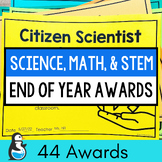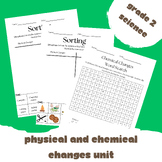14 results
Higher education basic principles scaffolded notes
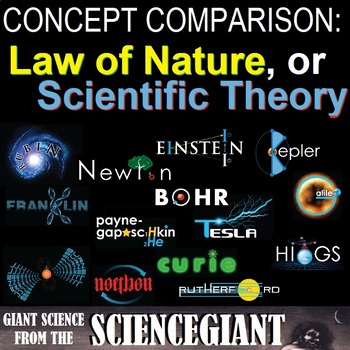
Question Exploration: Scientific Theory vs. Law
All scientific theories are based on natural laws. But not all natural laws have a scientific theory. This concept comparison helps Ss contrast How is a Scientific Theory Different from a Natural Law, and the question exploration helps Ss explain Why are some scientific theories modified? Question Exploration Routine is an instructional methods that teachers can use to help a diverse student population understand a body of content information by carefully answering a critical question to arrive
Subjects:
Grades:
7th - 12th, Higher Education
NGSS:
HS-ETS1-2
, MS-ETS1-1
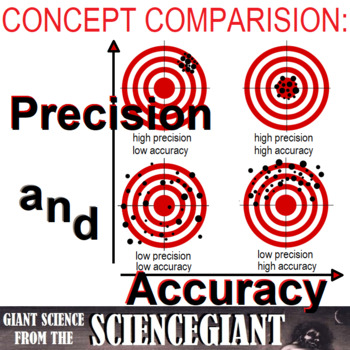
Concept Comparison: Accuracy and Precision in Measurements
Many people use the terms “accuracy” and “precision” interchangeably. However, for students of science, these words have different implications. This concept comparison helps Ss contrast between accuracy and precision in measurements, and between repeatable and reproducible to be reliable.The Concept Comparison Routine is used help compare and contrast key concepts. Specifically, students use like and unlike characteristics and categories shared and not shared by two or more concepts to better
Subjects:
Grades:
6th - 12th, Higher Education
NGSS:
MS-ETS1-2
, MS-ETS1-1
, HS-ETS1-1
Also included in: StayGiant Physics Bundle: Measurement

DNA History & Structure Guided Notes Worksheets or Foldable (differentiated)
DNA Guided Notes in two formats, worksheets and foldables for interactive notebooks. Both sets include differentiated fill-in-the-blank notes and teacher keys in red and black ink. The student notes are blank with keywords, they can be filled out using the teacher key, online web search, or any Biology textbook.DNA Topics:History and DNA Scientists involved in DNA's discoveryDNA 3-D shape (double helix)DNA backbone (Sugar & Phosphate)DNA nucleotides (A, T, G, C)Chargoff’s RuleHydrogen BondsA
Subjects:
Grades:
9th - 12th, Higher Education, Adult Education
NGSS:
HS-LS1-1
Also included in: DNA & RNA PowerPoint, Guided Notes, and 3D DNA & RNA Paper Model Bundle
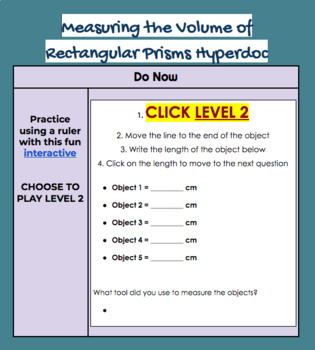
Volume of Rectangular Prisms Hyperdoc (Google Doc) and Google Slides Lesson
In this online lesson, students will play a linked interactive to practice using a ruler to measure objects. Then, students will use a linked google slides powerpoint to complete a building background section where they will learn about what volume is and how to measure the volume of a rectangular prism. Lastly, students will play a linked interactive where they create prisms and record the volume of the prisms. Extension activities are also included. This is a great lesson for elementary and m
Subjects:
Grades:
K - 10th, Higher Education

Thermal Energy Transfer and Heating - Conduction, Convection, Radiation
What is the relationship among conduction, convection, and radiation? This concept comparison helps Ss contrast thermal energy transfer methods between solids and fluids, and between objects in contact and being isolated. The Concept Comparison Routine is designed to help students understand concepts by analyzing how they are the same and how they are different. Through use of the routine, teachers and students explore the characteristics of two or more concepts, identify the characteristics tha
Subjects:
Grades:
7th - 11th, Higher Education
Also included in: StayGiant Physics Bundle: Thermal Energy
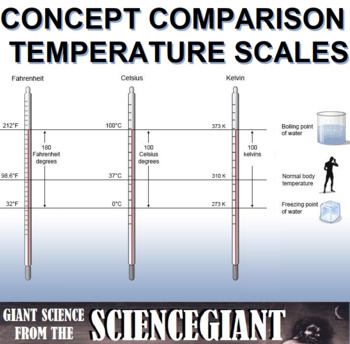
Concept Compare Frame: Temperature Scales (Fahrenheit, Celsius, Kelvin)
How do you finish the sentence: "It's so hot that..."? Good punchlines aside ("It's so hot... the fire ants are really on fire") Dan Fahrenheit, Andy Celsius, and Lord Kelvin had three ways to answer that question. This Concept Comparison contrasts their three temperature scales and looks for similarities. The Frame Routine is a strategy designed to assist students as they organize topics, main ideas and details. This technique includes a basic hierarchic graphic organizer called a "Frame" that
Subjects:
Grades:
7th - 12th, Higher Education
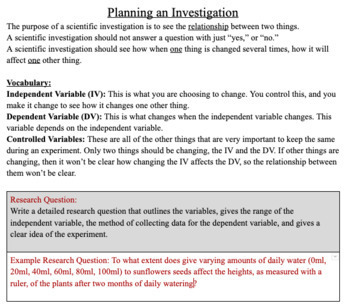
Full Investigation Scaffolding (MYP Science Criteria B&C)
This is a document that scaffolds all necessary parts of a lab report and includes clear steps and boxes where students should write each section. This can be used as scaffolding for students with varying levels of experience in MYP Science.This was originally designed for MYP Science Criteria B Inquiring and Designing and MYP Science Criteria C Processing and Evaluating.Each strand (Bi, Bii, Biii, Biv, Ci, Cii, Ciii, Civ, Cv) is addressed separately and in a different color so that students can
Subjects:
Grades:
6th - 12th, Higher Education, Adult Education, Staff
Types:
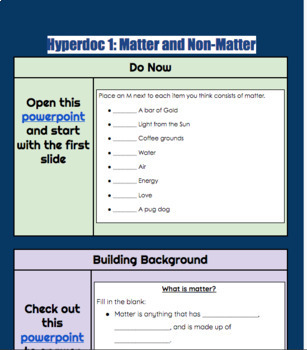
Matter and Non Matter Hyperdoc (Google Doc) Lesson with Google Slides
This hyperdoc is ideal for distance learning! Teach your students how to differentiate between matter and non-matter with this hyperdoc and google slides lesson. Students will use the google slides to complete a Do Now question and Building Background section. Then, students are asked to illustrate their knowledge in an Independent Practice section. Perfect for elementary and middle schoolers, designed for SWDs and ENLs.Click on the link in the hyperdoc to access the powerpoint.
Subjects:
Grades:
K - 10th, Higher Education

Concept Comparison: Objective and Subjective Reasoning
What are the characteristics of scientific reasoning? This concept comparison helps Ss contrast between objective and subjective reasoning used in the logical reasoning and the scientific method. What is true and what is untrue? When is an author practicing sound research techniques? How do we determine whether a source is reliable or not? Before a research project, introduce Ss to the INSPECT Evaluating Sources worksheet. This form can be used to inspect a variety of materials including arti
Subjects:
Grades:
7th - 12th, Higher Education
CCSS:
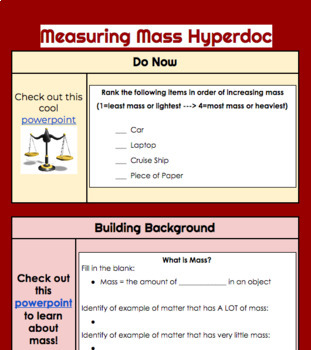
Measuring Mass Hyperdoc (Google Doc) and Google Slides Lesson
In this lesson, students will use a linked google slides powerpoint to complete a Do Now section and a Building Background section. They will learn what mass is, the tools for measuring mass, and the units for mass. They will practice reading different balances and scales. The Independent Practice links them to an online balance game where they will practice using a scale and adding up grams. There are optional extension activities and extra credit opportunities as well!This is a great resource
Subjects:
Grades:
K - 10th, Higher Education
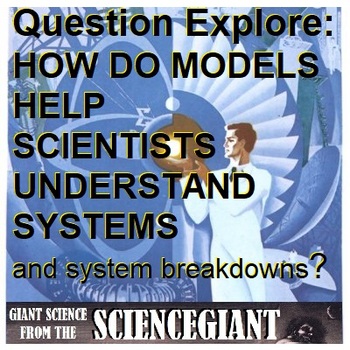
Question Exploration: How Can Models Help Scientists Understand Systems?
This question exploration asks: How Can Models Help Scientist Understand Systems? Especially with complex systems which can cause controversy and system breakdowns? And what about bias,, both by the scientist and by society? Question Exploration Routines are instructional methods that teachers can use to help a diverse student population understand a body of content information by carefully answering a critical question to arrive at a main idea answer. Students taught using the content enhanceme
Subjects:
Grades:
6th - 12th, Higher Education
NGSS:
HS-ETS1-3
, MS-ETS1-1
, HS-ETS1-1
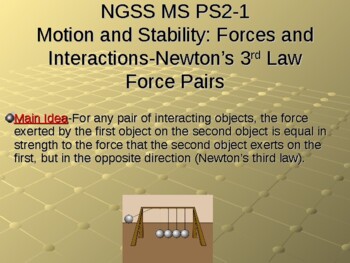
NGSS MS PS2-1 Motion and Stability: Forces and Interactions-Newton’s 3rd Law For
NGSS MS PS2-1 Motion and Stability Newton's 3rd Law PowerPointMeant as a resource for background knowledge, not a student performance tool, constructing an explanation, investigation, or model. Check out my NGSS MS PS 2-1 worksheet to check for understanding. Can be edited for younger or older learners. Includes GIF animations to keep student attention.Main Idea-For any pair of interacting objects, the force exerted by the first object on the second object is equal in strength to the force that
Subjects:
Grades:
6th - 9th, Higher Education, Adult Education
NGSS:
MS-PS2-1
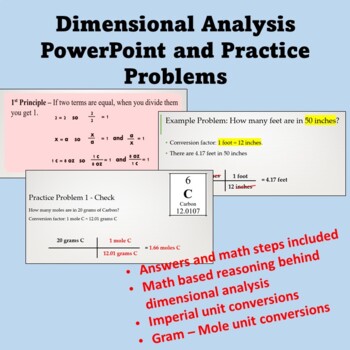
Introduction to Dimensional Analysis (stoichiometry)
Introduction to dimensional analysis (stoichiometry) power point that gives step-wise instructions and examples for train track setup using conversions students are familiar with. The power point then expands into chemistry practice problems converting from grams to moles using molar mass. Every slide and problem is editable because my slides use text boxes and lines instead of images for the train track setup. Add practice problems or modify questions as needed to align with your worksheets or
Subjects:
Grades:
9th - 12th, Higher Education
Also included in: Introduction to Dimensional Analysis Bundle

Introduction of Principle of Accounting.
Content: 1. Introduction of Accounting terms.2. Principles and Equation of Accounting.3. Rules of Debit and Credit.4. Journal and Ledger.5. Trial balance.6. Final Account.7. Bank Reconciliation Statement.8. Sub-Division of journal Cash book.
Subjects:
Grades:
8th - 12th, Higher Education, Adult Education, Staff
Showing 1-14 of 14 results


